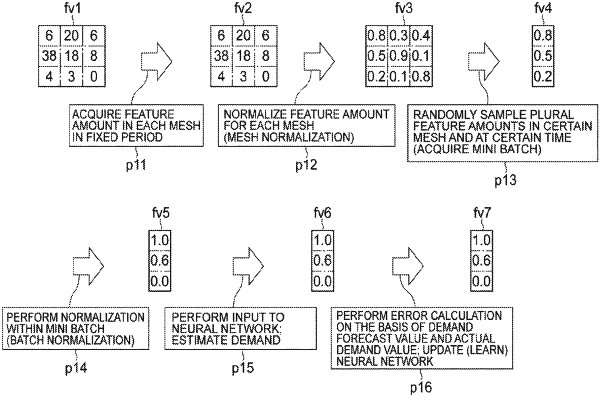| CPC G06N 3/084 (2013.01) [G06N 3/09 (2023.01); G06N 20/00 (2019.01); G06Q 10/04 (2013.01); G06Q 50/40 (2024.01)] | 11 Claims |

|
1. A learning system configured to generate a neural network through machine learning in a demand forecast system for performing a forecast of demand for a predetermined service, for each mesh of a plurality of meshes that divide a geographical area, using a single forecast model including the neural network generated through machine learning, the learning system comprising circuitry configured to:
acquire, as learning data, a feature amount for learning for each of the meshes associated with each of a plurality of periods in the past, the feature amount for learning including at least a number of demands for the predetermined service in each of the meshes in each of the periods, as a feature amount;
normalize the feature amount for learning included in the learning data over the plurality of past periods for each of the meshes, and normalize at least the number of demands in the feature amount for learning; and
input the feature amount for learning including the number of demands normalized by the circuitry to the neural network, and generate the neural network.
|